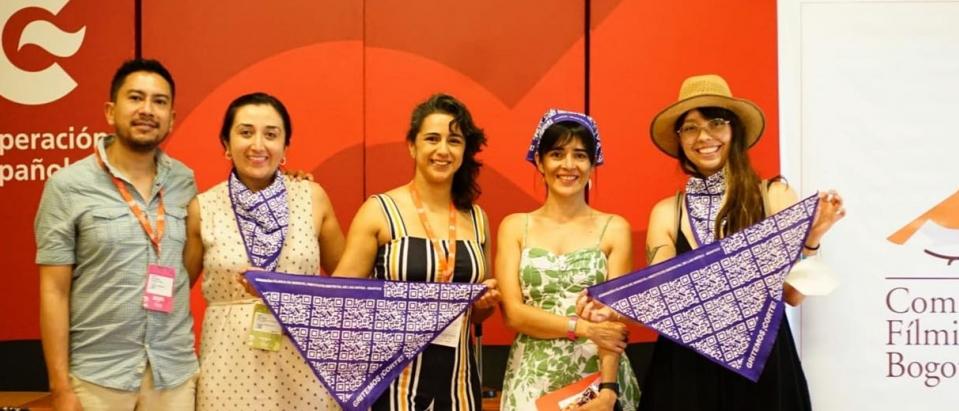
The Comisión Fílmica de Bogotá –Bogota Film Commission–, program belonging to Instituto Distrital de las Artes- Idartes, launches the publication LET’S SHOUT CUT! Care and violence prevention guidebook in the audiovisual work environment – Chapter I: Women’s Approach as part of the 61st Cartagena de Indias International Film Festival – FICCI. A tool exposing an investigation about what has happened regarding the gender violence prevention in the audiovisual industry in different countries. In addition, it provides information on hotlines for the victims and making known what are the behaviors deemed as harassment and bullying.
“Additionally, this document proposes a practical exercise where readers can reply to it freely, in order to identify and reflect on the behaviors having become normal, and that can be violent, to be part of changes in the sector”, explains Ricardo Cantor, Idartes Audiovisual Arts Leader.
In this way, exercises included in the Guidebook can be done individually or in groups, and the results could be disseminated with a friend or with the work team, “because it is through joint reflection we can trigger a collective awareness that helps to identify and prevent the different forms of violence to which we are exposed and establishing agreements on how to understand and react to every situation” says the text, which can be downloaded here.
Carol Ann Figueroa, researcher and Guidebook editor, explains that women’s labor value is reduced, one of these situations having become normal. “What women do is distorted, scorned, we believe women are there to please or to make work environment nicer”.
This document joins national and international initiatives providing new guidelines for relationships in the workplace, particularly in audiovisual environments. This is explained by Figueroa, who points out the text takes stock of what decisions have been taken after the Me Too movement took place: “I find it very interesting to note that a collective turn is really taking place and I was surprised to find the International Labor Organization regulations already set guidelines on what countries should do with respect to harassment and bullying in work environments”.
Hence the value of the GRITEMOS ¡CORTE! – LET’S SHOUT CUT! publication because, as Carol Ann points out, “it will allow us to start an honest conversation between men and women in the sector, based on openness instead of judgment, so that together we can create joint solutions regarding violence situations”.
So, this publication and the gender awareness workshops organized by the Bogota Film Commission make up part of the strategy to prevent violence and promote respectful and safe work environments free of discrimination for professionals in the sector.
The truth is that, the work world is going through a time of intense cultural transformation as highlighted in the Guide and, as far as possible, it is important to know how to be part of this change in the best way possible. That is why it is so important people involved in the audiovisual industries take the GRITEMOS ¡CORTE! – LET’S SHOUT CUT! Contents as their own since it will be a useful tool that will allow all of us to prevent gender violence in the audiovisual industry.